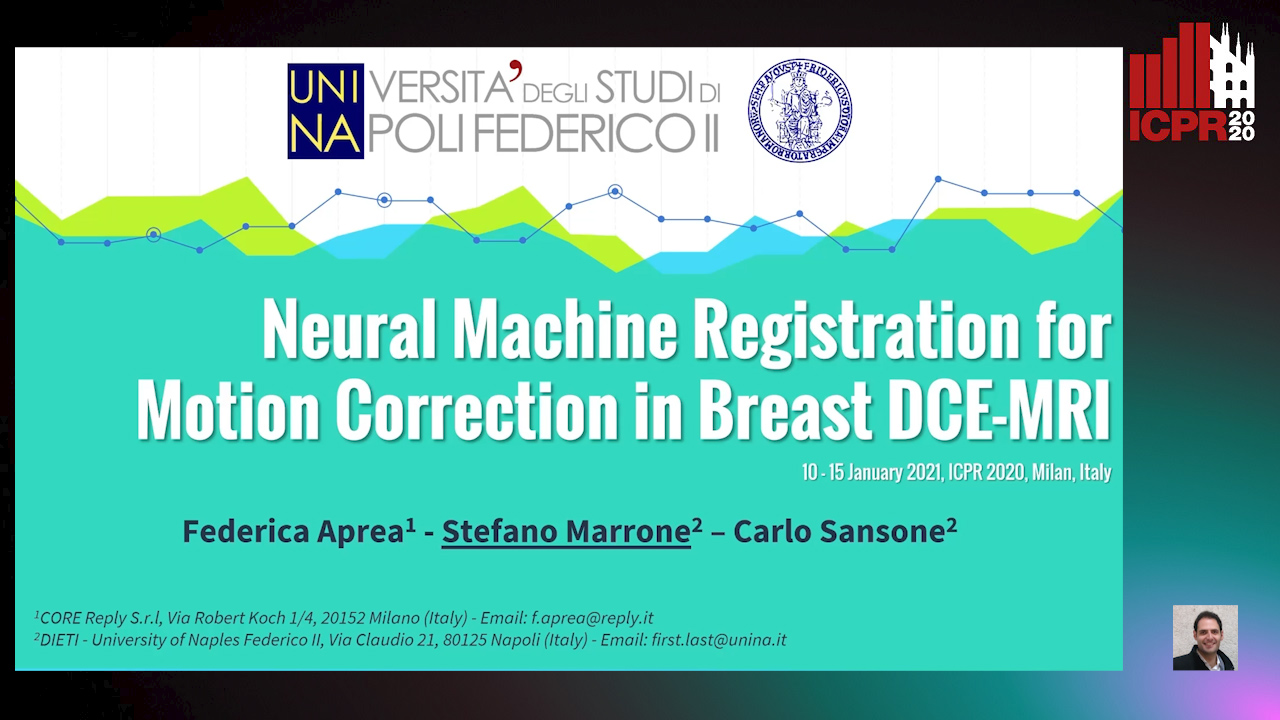Stefano Marrone
Paper download is intended for registered attendees only, and is
subjected to the IEEE Copyright Policy. Any other use is strongly forbidden.
Papers from this author
Neural Machine Registration for Motion Correction in Breast DCE-MRI
Federica Aprea, Stefano Marrone, Carlo Sansone

Auto-TLDR; A Neural Registration Network for Dynamic Contrast Enhanced-Magnetic Resonance Imaging
Abstract Slides Poster Similar
Cancer is one of the leading causes of death in the western world, with medical imaging playing a key role for early diagnosis. Focusing on breast cancer, one of the emerging imaging methodologies is Dynamic Contrast Enhanced-Magnetic Resonance Imaging (DCE-MRI). The flip side of using DCE-MRI is in its long acquisition times, often causing the patient to move, resulting in motion artefacts, namely distortions in the acquired image that can affect DCE-MRI analysis. A possible solution consists in the use of Motion Correction Techniques (MCTs), i.e. procedures intended to re-align the post-contrast image to the corresponding pre-contrast (reference) one. This task is particularly critic in DCE-MRI, due to brightness variations introduced in post-contrast images by the contrast-agent flowing. To face this problem, in this work we introduce a new MCT for breast DCE-MRI leveraging Physiologically Based PharmacoKinetic (PBPK) modelling and Artificial Neural Networks (ANN) to determine the most suitable physiologically-compliant transformation. To this aim, we propose a Neural Registration Network relying on a very task-specific loss function explicitly designed to take into account the contrast agent flowing while enforcing a correct re-alignment. We compared the obtained results against some conventional motion correction techniques, evaluating the performance on a patient-by-patient basis. Results clearly show the effectiveness of the proposed approach, resulting as the best performing even when compares against other techniques designed to take into account for brightness variations.